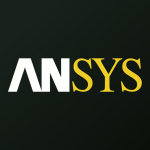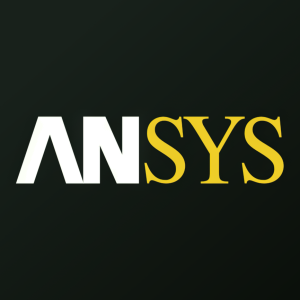Welcome to our dedicated page for Ansys news (Ticker: ANSS), a resource for investors and traders seeking the latest updates and insights on Ansys stock.
Ansys Inc. (NASDAQ: ANSS) delivers cutting-edge engineering simulation solutions powering innovation across aerospace, automotive, and semiconductor industries. This dedicated news hub provides investors and engineering professionals with essential updates on the company's strategic developments.
Track critical announcements including quarterly earnings, product launches for multiphysics simulation tools, and partnerships advancing digital twin technologies. Access verified information about Ansys' R&D initiatives in computational fluid dynamics (CFD) and cloud-based simulation platforms that shape industry standards.
Our curated collection features official press releases alongside analysis of major acquisitions and leadership updates. Stay informed about innovations in electric vehicle simulation systems and semiconductor design validation tools that demonstrate Ansys' technical leadership.
Bookmark this page for real-time updates on ANSYS's market-moving developments and in-depth coverage of how its simulation software enables next-generation engineering breakthroughs worldwide.
Ansys (NASDAQ: ANSS) has announced a strategic agreement with NVIDIA to integrate NVIDIA Omniverse technology directly into its simulation solutions. The integration will initially focus on autonomy and computational fluid dynamics (CFD) applications.
The collaboration enables seamless integration through Universal Scene Description (OpenUSD), allowing users to access Omniverse technologies and libraries directly from Ansys interfaces. Key benefits include enhanced digital twin capabilities, improved physical AI development, and immersive visualizations for complex engineering tasks.
A notable implementation is PyAnsys-Heart, a digital twin of the human heart that demonstrates the integration's potential through a speech-to-text interface. The partnership aims to streamline workflow efficiency and accelerate innovation across industries through advanced simulation capabilities.
Ansys (NASDAQ: ANSS) has unveiled its 2025 R2 release, introducing significant AI-powered enhancements across its simulation portfolio. The key innovation is Ansys Engineering Copilot, an AI assistant integrated into Ansys products that provides instant access to over 50 years of simulation expertise.
The release features seven products with built-in AI+ functionality, including the new Missions AI+ ODTK tool for orbital accuracy. Notable improvements include 17x faster radiation pattern calculations, expanded Python compatibility with over 40 libraries, and enhanced data management capabilities. The update also introduces GPU acceleration in Icepak software and Cloud Burst Compute availability across six products.
This release focuses on three main areas: AI-driven tools for intuitive simulations, improved data handling and automation, and advanced computation capabilities for real-world modeling.
Synopsys (Nasdaq: SNPS) has secured all required regulatory approvals for its planned acquisition of ANSYS (Nasdaq: ANSS). The transaction is expected to close around July 17, 2025, pending satisfaction of remaining customary conditions.
The strategic acquisition, initially announced on January 16, 2024, will combine Synopsys' silicon design and IP solutions with Ansys' simulation and analysis portfolio. This merger aims to create a leading provider of engineering solutions from silicon to systems, enhancing capabilities for AI-powered product innovation.
Synopsys (Nasdaq: SNPS) and Ansys (NASDAQ: ANSS) provided an update on their pending acquisition's regulatory approval status. The companies have successfully obtained merger clearance in all jurisdictions except China, where they are in advanced stages of obtaining approval from the State Administration for Market Regulation.
The companies emphasized that the transaction has been approved in other jurisdictions based on its merits and anticipated benefits for stakeholders and future technology innovation. They continue to work collaboratively with Chinese regulators to secure the final necessary approval.
Synopsys (NASDAQ: SNPS) and Ansys (NASDAQ: ANSS) provided an update on their pending acquisition's regulatory approval status. The companies have successfully obtained merger clearance in all jurisdictions except China, where they are in advanced discussions with the State Administration for Market Regulation (SAMR).
The companies emphasized that the merger approvals received so far were based on the transaction's merits and its expected benefits for stakeholders and future technology innovation. They continue to work collaboratively with Chinese regulators to secure the final necessary approval.
Ansys reported strong Q1 2025 financial results with revenue reaching $504.9 million, marking an 8.2% increase from Q1 2024. The company achieved GAAP earnings per share of $0.59 and non-GAAP earnings per share of $1.64, showing significant growth compared to $0.40 and $1.39 respectively in Q1 2024.
Key highlights include:
- Operating cash flows of $398.9 million
- Annual Contract Value (ACV) of $410.1 million
- GAAP operating profit margin of 11.7%
- Non-GAAP operating profit margin of 33.5%
The company's pending acquisition by Synopsys has received clearances from multiple regulatory authorities, including the U.K., Turkey, Japan, Korea, and Taiwan. The transaction is expected to close in the first half of 2025. Due to this pending acquisition, Ansys has suspended quarterly earnings calls and guidance.
Ansys has achieved certification for its thermal and multiphysics signoff tools with Intel's 18A process technology, marking a significant advancement in semiconductor design capabilities. The certification covers key products including RedHawk-SC, Totem, and HFSS-IC Pro, specifically designed for AI chips, GPUs, and HPC applications.
The collaboration extends to Intel Foundry's EMIB technology for multi-die 3D-IC systems, with Ansys providing comprehensive analysis tools for thermal reliability and electromagnetic integrity. The company is also progressing certification for Intel 18A-P and collaborating on Intel 14A-E process development.
Notably, Ansys has joined the Intel Foundry Chiplet Alliance to help develop a secure ecosystem for interoperable chiplets. This partnership aims to enhance semiconductor system reliability through precise simulation tools, supporting the industry's shift toward advanced multi-die assembly and efficient chip design.
Ansys (NASDAQ: ANSS) has strengthened its partnership with TSMC, announcing enhanced AI-assisted workflows and new certifications for semiconductor solutions. The collaboration focuses on 3D integrated circuit (3D-IC) design optimization and accelerating market readiness for AI and high-performance computing applications.
Key developments include certification of RedHawk-SC, RedHawk-SC Electrothermal, and Totem for TSMC's A16™ process, and HFSS-IC Pro certification for TSMC's 5nm and 3nm processes. The partnership introduces AI-assisted photonic design optimization using Ansys optiSLang® and enhanced RF migration flow capabilities.
The collaboration also establishes a joint multiphysics signoff analysis flow enablement platform with Synopsys, integrating various analysis tools for extraction, timing, power, EM/IR, and thermal analysis, aimed at accelerating the convergence of large 3D-IC designs.


